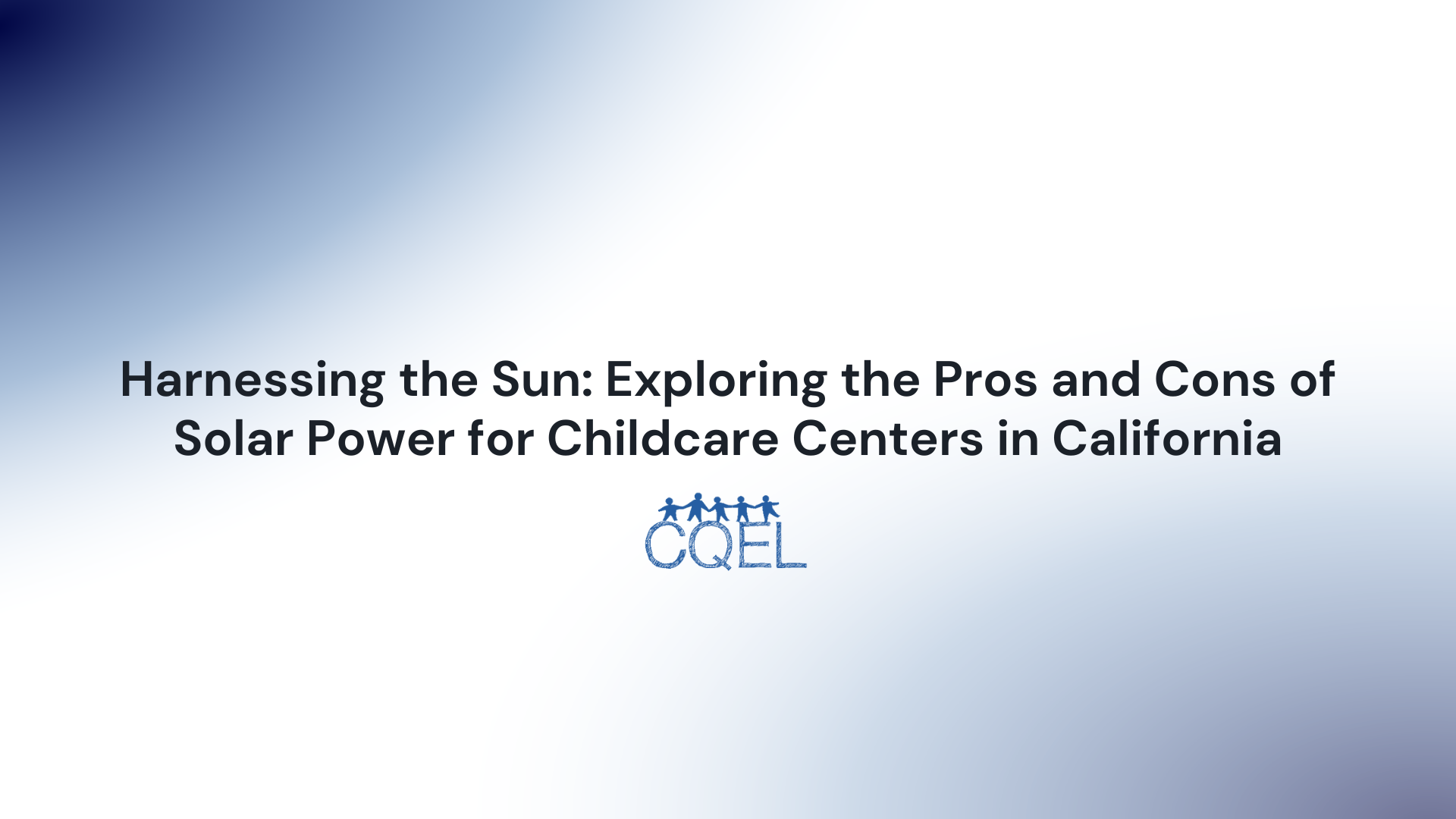Harnessing the Sun: Exploring the Pros and Cons of Solar Power for Childcare Centers in California
For childcare centers, this could mean an opportunity to reduce operational costs, impart essential environmental education to children, and contribute to the fight against climate change.

Solar power, derived from the sun's radiation, is a promising renewable energy source. For childcare centers, this could mean an opportunity to reduce operational costs, impart essential environmental education to children, and contribute to the fight against climate change. Numerous solar incentives and programs, such as the Federal Solar Tax Credit, make solar installations more affordable and attractive for childcare centers in California.
The Financial Benefits
One of the biggest advantages of switching to solar power is the potential for significant savings on energy costs. After the initial investment in solar panels, a childcare center can generate its own electricity, potentially slashing its monthly utility bills. Solar installations also increase property value, adding to a center's assets. Plus, California’s Net Energy Metering program allows users to sell excess electricity back to the grid, creating an additional income stream.
Educational Opportunities
Solar power can provide excellent hands-on learning opportunities for children, helping them understand renewable energy, sustainability, and climate change from an early age. Centers can incorporate solar panels into their curriculum, discussing energy generation, the importance of the sun, and the need for environment-friendly practices.
Green Reputation
Adopting solar energy enhances a center’s reputation as an environmentally responsible organization. This can attract parents who value sustainability, providing a competitive edge in the increasingly green-conscious market.
Installation and Upfront Costs
Despite the long-term savings, the initial cost of installing solar panels can be substantial. While grants, incentives, and financing options are available, the upfront expense may still be prohibitive for some centers.
Site Suitability and Maintenance
Not all properties are suitable for solar panel installations. Factors such as roof direction, angle, and shade can affect the efficiency of solar panels. Furthermore, solar panels require regular maintenance and cleaning to ensure optimal performance, leading to additional costs and effort.
Energy Production Variability
Solar power production is not consistent, varying with the time of day, seasons, and weather conditions. Childcare centers may need to stay connected to the grid or invest in battery storage systems to ensure a stable energy supply.
Recycling and Disposal
While solar panels have a lifespan of around 25-30 years, they eventually need to be disposed of. Currently, the recycling infrastructure for solar panels is not as robust as for other products, raising concerns about future e-waste.
While transitioning to solar power presents certain challenges, the benefits—environmental responsibility, educational opportunities, cost savings, and an enhanced reputation—are compelling. With careful planning, financial preparation, and a commitment to greener operations, childcare centers can lead the way in modeling sustainable practices for the next generation.
